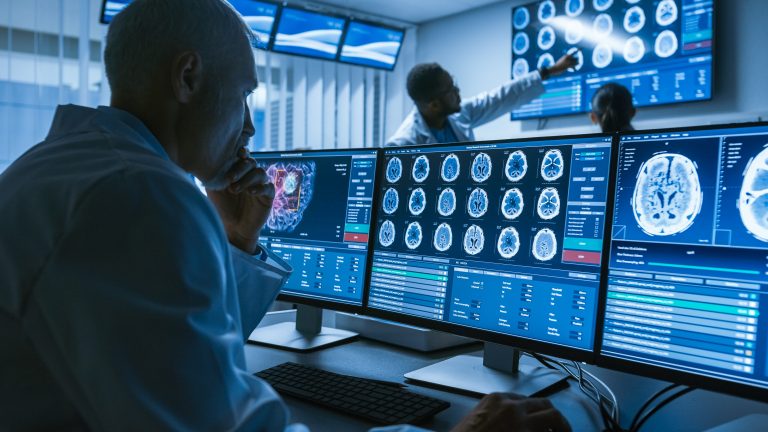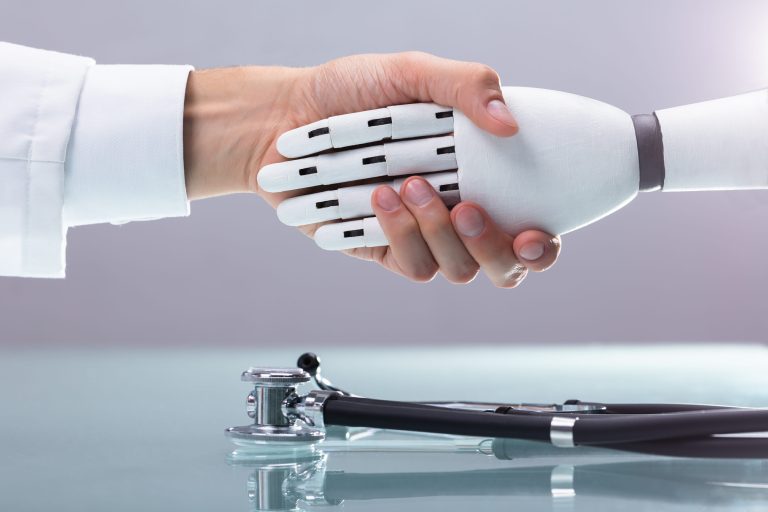Revolutionizing Biomedical Imaging: The Impact of Artificial Intelligence
ETH Researchers Integrate AI to Enhance Biomedical Imaging Quality
ETH researchers are harnessing the power of artificial intelligence to refine the quality of images obtained from an emerging biomedical imaging technique. This innovation lays the groundwork for more precise diagnoses and economical medical devices.
Scientists from ETH Zurich and the University of Zurich have leveraged machine learning techniques to elevate the effectiveness of optoacoustic imaging. This novel medical imaging method is invaluable for diverse applications—ranging from visualizing blood vessels and exploring brain activity to characterizing skin lesions and diagnosing breast cancer. However, the clarity of the resulting images heavily relies on the sensor count and their arrangement within the device: more sensors typically equate to superior image quality. Through their new strategy, ETH researchers have successfully decreased the number of necessary sensors without compromising image clarity. This advancement enables a reduction in device costs, enhances imaging speed, and improves diagnostic accuracy.
Optoacoustics (see box) shares similarities with ultrasound imaging. In ultrasound, a probe emits ultrasonic waves into the body, which are then reflected by the tissue. The probe’s sensors detect the returning waves, generating a visual of the body’s interior. Conversely, optoacoustic imaging transmits short pulses of laser light into the tissue, which are absorbed and transformed into ultrasonic waves. These waves are similarly captured and converted into images.
Image Distortion Correction
Led by Daniel Razansky, Professor of Biomedical Imaging at ETH Zurich and the University of Zurich, the research team explored methods to enhance the image quality of affordable optoacoustic devices equipped with a limited number of ultrasonic sensors.
To kickstart their efforts, they utilized a high-end optoacoustic scanner they had developed, featuring 512 sensors that produced remarkably high-quality images. These images were analyzed through an artificial neural network, which adeptly learned the characteristics of the high-quality visuals.
Subsequently, the team reduced the number of sensors drastically, retaining only 128 or even 32, which adversely influenced image quality. Due to insufficient data, images displayed streak-type artifacts. Remarkably, the previously trained neural network effectively corrected these distortions, largely restoring the image quality to levels comparable with those captured by all 512 sensors.
Scientists successfully employ optoacoustic tomography to generate cross-sectional images of mice. With the aid of machine learning, they could greatly enhance the quality of images recorded with a reduced number of sensors. (Source: Davoudi N et al. Nature Machine Intelligence 2019).
In optoacoustics, image clarity improves not only with a higher number of sensors but also when capturing data from multiple angles: a wider sector of sensors around the subject correlates with better image quality. The team’s advanced machine learning algorithm proved effective in enhancing images recorded from a limited capture sector. “This is especially crucial for clinical contexts, as laser pulses cannot penetrate entirely through the human body, usually restricting the visible area to one accessible direction,” Razansky explains.
Enabling Clinical Decision Making
The scientists emphasize that their innovative technique is not confined to optoacoustic imaging. Because their method processes the reconstructed images rather than the raw data, it is applicable across various imaging modalities. “Essentially, this methodology can yield high-quality visuals from any sparse dataset,” states Razansky. He emphasizes the frequent challenges physicians encounter when deciphering poor-quality images from patients. “Our research demonstrates that AI can significantly improve such images, facilitating more accurate diagnoses.”
For Razansky, this research exemplifies the practical applications of existing artificial intelligence methods. “Many individuals believe AI could completely replace human intelligence; however, that perception is probably exaggerated, especially regarding current AI technology,” he asserts. “While it cannot replicate human creativity, it can alleviate certain labor-intensive, repetitive tasks.”
Presently, the researchers have focused on an optoacoustic tomography system tailored for small animals, training their machine learning algorithms using images from mice. The next milestone, according to Razansky, is to transition this methodology to optoacoustic images derived from human patients.
Unveiling Tissue Functions
Unlike techniques such as ultrasound, X-ray, or MRI—primarily utilized for visualizing anatomical changes—optoacoustics can reveal functional and molecular information without needing contrast agents or radioactive tracers. A prime example is detecting local alterations in tissue oxygenation, a critical marker for cancer, aiding in early diagnosis. Additionally, lipid concentrations in blood vessels could serve as potential indicators for early detection of cardiovascular diseases.
However, it is essential to recognize that the light waves employed in optoacoustic imaging have limitations; unlike other wave types, they do not penetrate deeply into the human body, making this method effective for examining tissues only a few centimeters beneath the skin.
Researchers effectively addressed various image distortions, enhancing the visual quality to align more closely with readings from all 512 sensors.
In a fascinating study, scientists employed optoacoustic tomography to generate cross-sectional images of a mouse. By harnessing the power of machine learning, they significantly improved the quality of images captured with a limited number of sensors. (Source: Davoudi N et al. Nature Machine Intelligence 2019)
In the realm of optoacoustics, image clarity not only improves with an increased sensor count, but also when data is gathered from multiple angles: the broader the arrangement of sensors around the subject, the superior the resulting image quality. Remarkably, the machine learning algorithm developed was able to enhance images taken from a restricted sector as well. “This is especially crucial for clinical settings, since laser pulses cannot penetrate the entirety of the human body, meaning the area being imaged is typically accessible from just one direction,” notes Razansky.
Enhancing Clinical Decision-Making
The researchers emphasize that their innovative approach transcends optoacoustic imaging. Since the method relies on reconstructed images rather than raw data, it can be adapted to various imaging modalities. “Essentially, this methodology can be utilized to generate high-quality images from any form of sparse data,” Razansky explains. He highlights that physicians often face the dilemma of interpreting low-quality images from patients. “Our findings demonstrate that AI techniques can enhance these images, facilitating more precise diagnoses.”
For Razansky, this research exemplifies the practical applications of existing artificial intelligence technologies. “There’s a common misconception that AI might replace human intellect. While this notion is likely overstated, especially given the current capabilities of AI,” he states. “AI cannot substitute for human creativity, but it can alleviate some tedious, repetitive tasks.”
In their recent investigation, the scientists utilized a customized optoacoustic tomography system designed for small animals and trained machine learning algorithms with mouse images. The forthcoming phase will involve applying this methodology to optoacoustic images sourced from human patients, Razansky confirms.
Illuminating Tissue Function
Distinct from techniques like ultrasound, X-ray, or MRI, which primarily showcase anatomical changes, optoacoustics (or photoacoustics) offers insights into functional aspects without the need for additional substances. For instance, it can reveal local variations in tissue oxygenation—a crucial indicator of cancer that aids in early diagnosis. Additionally, lipid levels within blood vessels may serve as early warning signs for cardiovascular diseases.
However, it is important to note that the light waves utilized in optoacoustic imaging do not penetrate deeply into the human body, restricting the method’s application to tissues located just a few centimeters under the skin.







